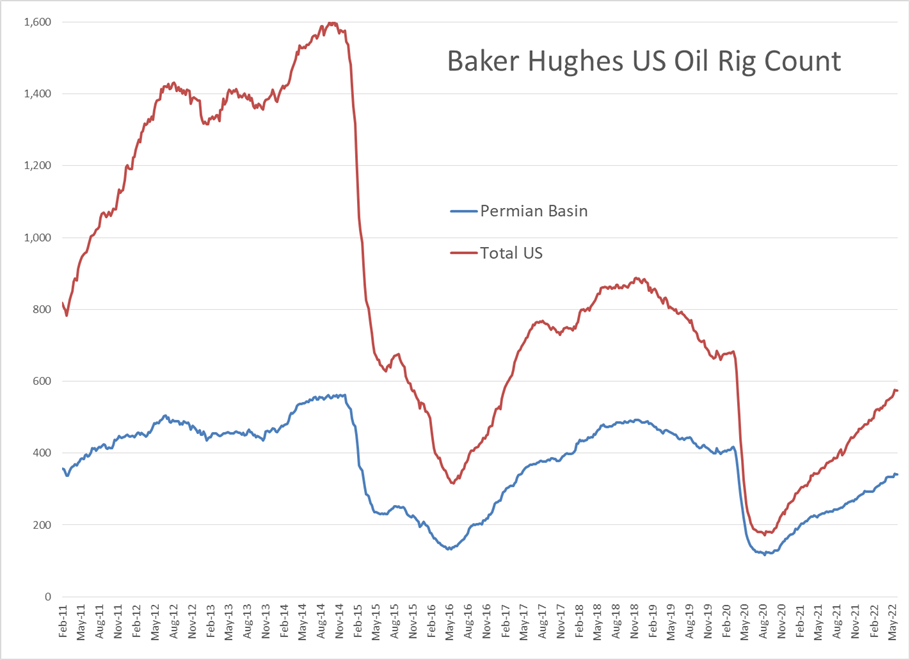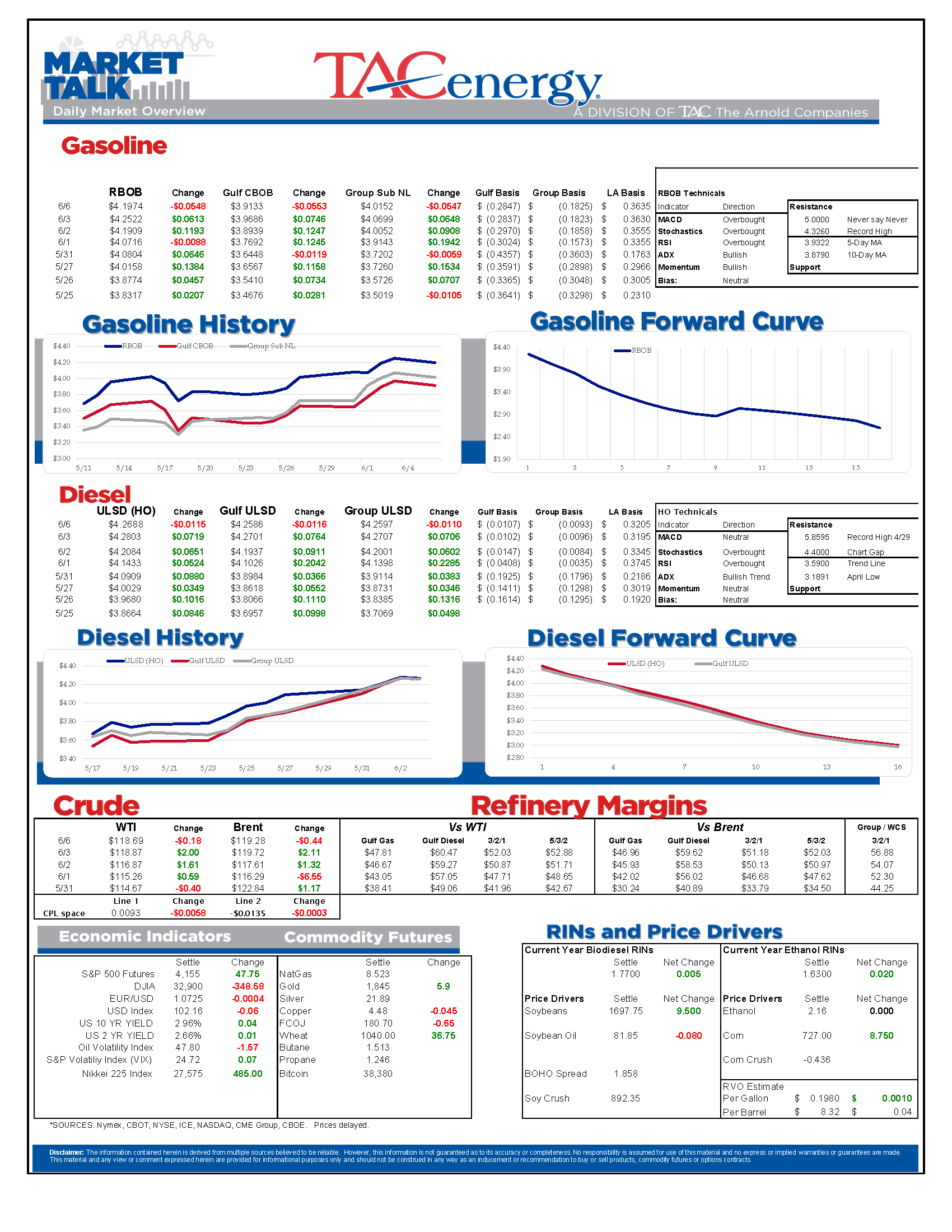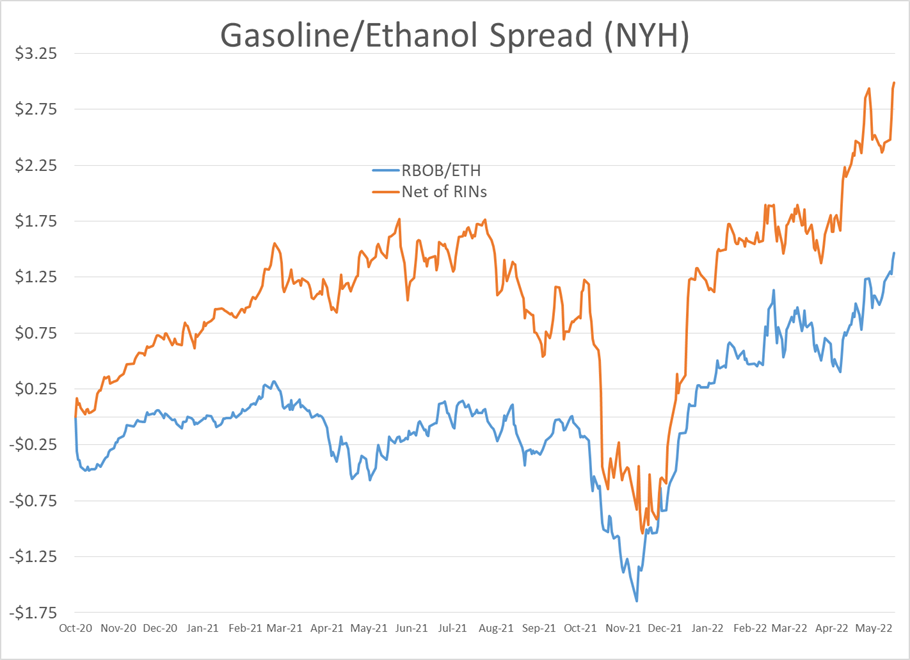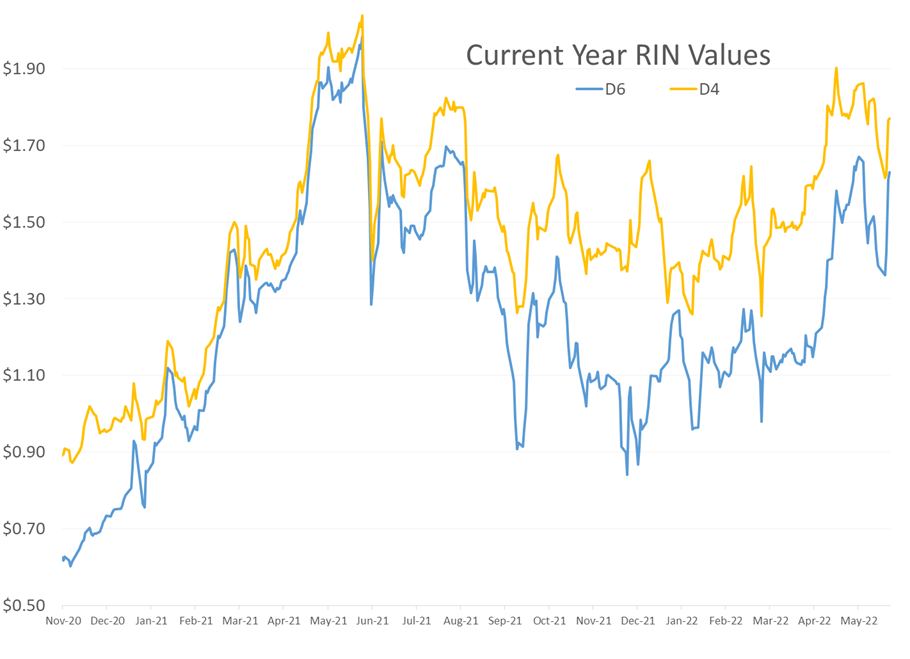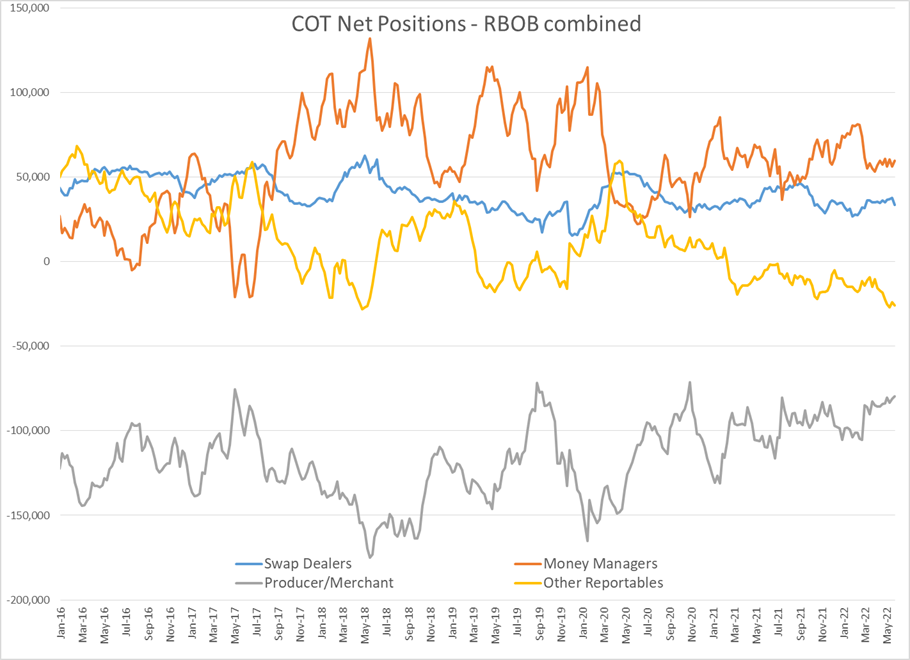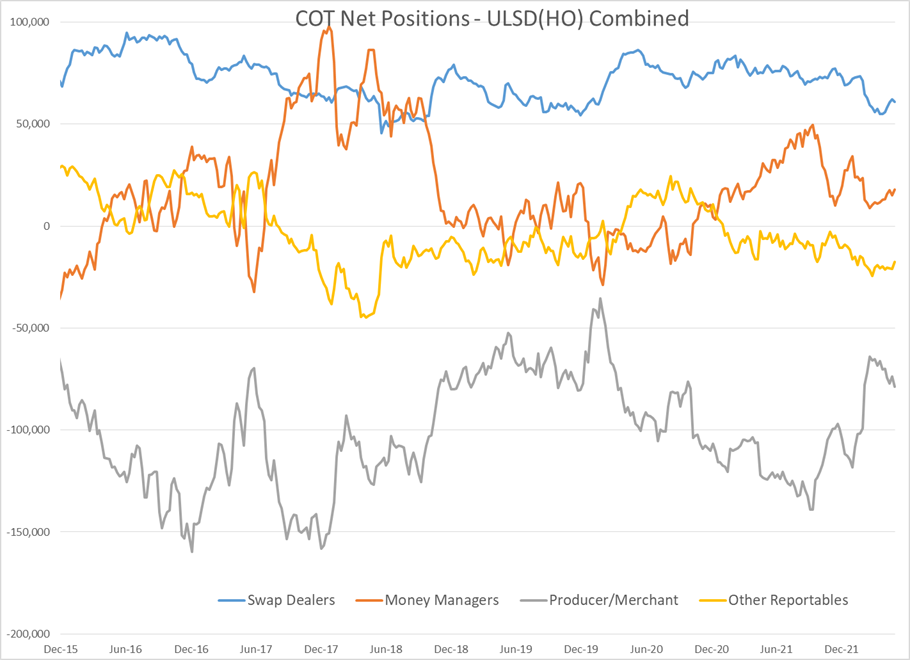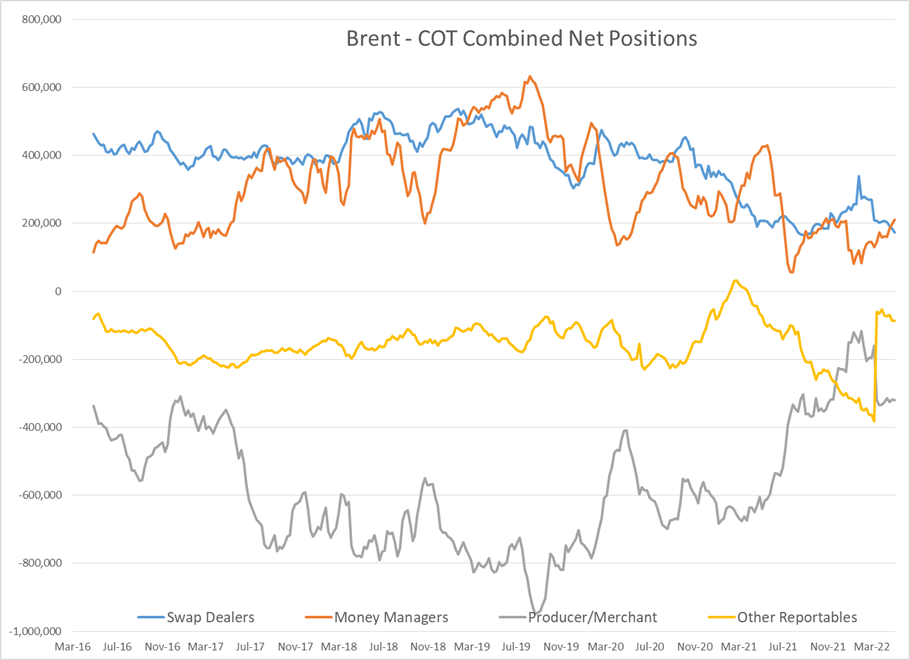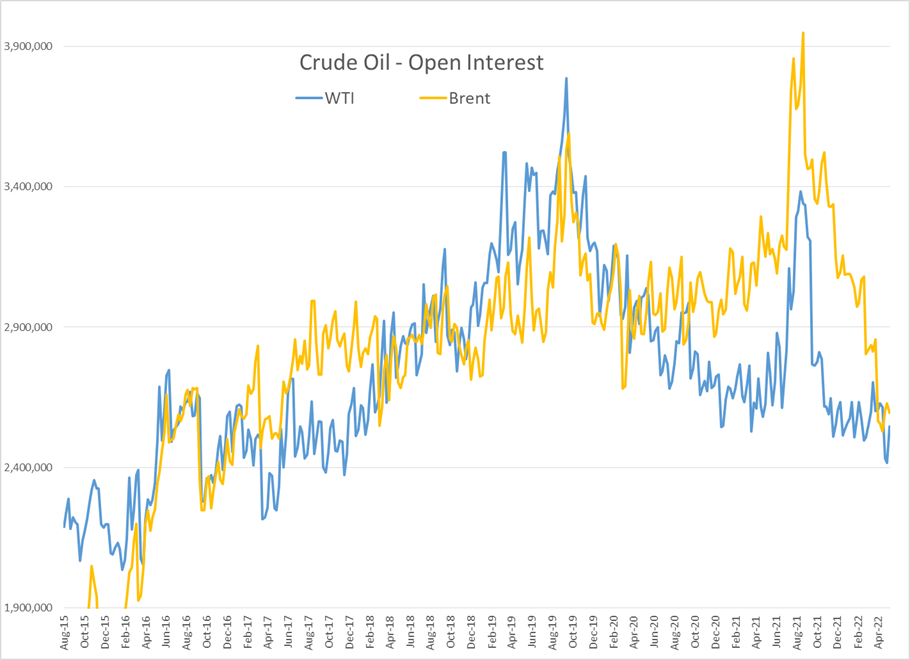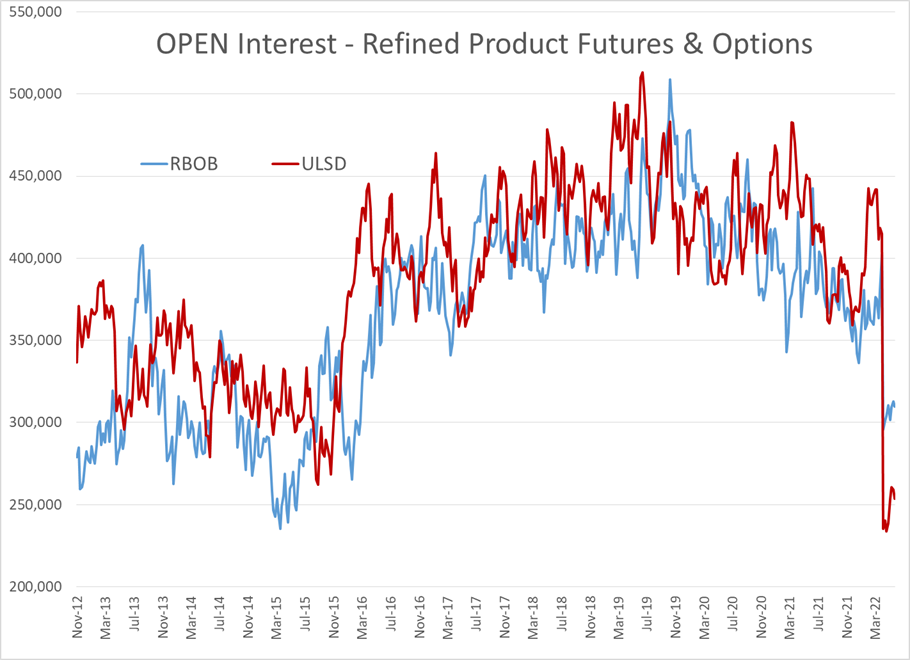Gasoline Prices Are Down About A Nickel This Morning After Reaching A Fresh Record High Overnight

Gasoline prices are down about a nickel this morning after reaching a fresh record high overnight, while the rest of the complex is trading close to unchanged to start the week.
The EPA released its final volume mandates for the RFS from 2020-2022 Friday, which raised the ethanol mandate for this year beyond previous estimates, and helped RIN prices continue their rally. The ruling also defined a pathway for bio intermediates, which are biofuels that require processing at multiple facilities, to qualify for the RFS program, which could add to the supply of both advanced biofuel and cellulosic fuels. In addition, the agency also denied 69 petitions for small refinery hardship waivers to the RFS.
Money managers added to their net length across the energy complex last week, with new long positions and some heavy short covering both contributing to the increase. While the large speculators seem to be getting more comfortable betting on higher prices, the positions are still small in comparison to previous years, and open interest remains near multi-year lows, suggesting the ongoing volatility is still too hot for some to handle.
Baker Hughes reported no net change in the count of rigs drilling for oil and gas in the US last week. A Rystad energy report last week forecast that the Permian basin will outpace the rest of the world in production growth in the coming year, even though the rig count remains well below pre-COVID levels.
The US has made a small concession on Venezuelan sanctions, allowing 2 European companies to take delivery of previously off-limits oil, so long as that oil is delivered in Europe and not sold in the open market. While this is a big step in terms of the US state department acknowledging the global shortage of energy supplies, the actual volumes in play so far are quite small and shouldn’t impact prices much.
Today’s interesting read, from the Financial Times: The end of the term ESG.
Click here to download a PDF of today's TACenergy Market Talk.
News & Views
View All
Energy Futures Are Caught Up In Headline Tug-O-War This Morning
Energy futures are caught up in headline tug-o-war this morning with Canadian oil production concerns and a positive US GDP report trying to push prices higher while sinking Chinese demand worries and Gaza ceasefire hopes are applying downward pressure. The latter two seem to be favored more so far this morning with WTI and Brent crude oil futures down ~45 cents per barrel, while gasoline and diesel prices are down about half a cent and two cents, respectively.
No news is good news? Chicago gasoline prices dropped nearly 30 cents yesterday, despite there not being any update on Exxon’s Joliet refinery after further damage was discovered Wednesday. Its tough to say if traders have realized the supply situation isn’t as bad as originally thought or if this historically volatile market is just being itself (aka ‘Chicago being Chicago’).
The rain isn’t letting up along the Texas Gulf Coast today and is forecasted to carry on through the weekend. While much of the greater Houston area is under flood watch, only two refineries are within the (more serious) flood warning area: Marathon’s Galveston Bay and Valero’s Texas City refineries. However, notification that more work is needed at Phillip’s 66 Borger refinery (up in the panhandle) is the only filing we’ve seen come through the TECQ, so far.
Premiums over the tariff on Colonial’s Line 1 (aka linespace value) returned to zero yesterday, and actually traded in the negatives, after its extended run of positive values atypical of this time of year. Line 1’s counterpart, Line 2, which carries distillates from Houston to Greensboro NC, has traded at a discount so far this year, due to the healthy, if not over-, supply of diesel along the eastern seaboard.
Click here to download a PDF of today's TACenergy Market Talk.

WTI And Brent Crude Oil Futures Are Trading ~$1.50 Per Barrel Lower In Pre-Market Trading
The across-the-board drawdown in national energy stockpiles, as reported by the Department of Energy yesterday, stoked bullish sentiment Wednesday and prompt month gasoline, diesel, and crude oil futures published gains on the day. Those gains are being given back this morning.
The surprise rate cut by the People’s Bank of China is being blamed for the selling we are seeing in energy markets this morning. While the interest rate drop in both short- and medium-term loans won’t likely affect energy prices outright, the concern lies in the overall economic health of the world’s second largest economy and crude oil consumer. Prompt month WTI and Brent crude oil futures are trading ~$1.50 per barrel lower in pre-market trading, gasoline and diesel are following suit, shaving off .0400-.0450 per gallon.
Chicagoland RBOB has maintained its 60-cent premium over New York prices through this morning and shows no sign of coming down any time soon. Quite the opposite in fact: the storm damage, which knocked Exxon Mobil’s Joliet refinery offline on 7/15, seems to be more extensive than initially thought, potentially extending the repair time and pushing back the expected return date.
There are three main refineries that feed the Chicago market, the impact from one of them shutting down abruptly can be seen in the charts derived from aforementioned data published by the DOE. Refinery throughput in PADD 2 dropped 183,000 barrels per day, driving gasoline stockpiles in the area down to a new 5-year seasonal low.
While it seems all is quiet on the Atlantic front (for now), America’s Refineryland is forecasted to receive non-stop rain and thunderstorms for the next four days. While it may not be as dramatic as a hurricane, flooding and power outages can shut down refineries, and cities for that matter, all the same, as we learned from Beryl.

